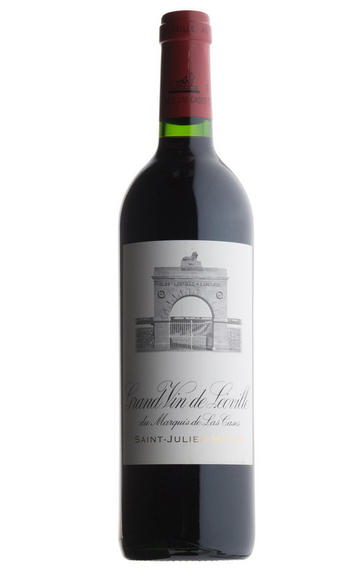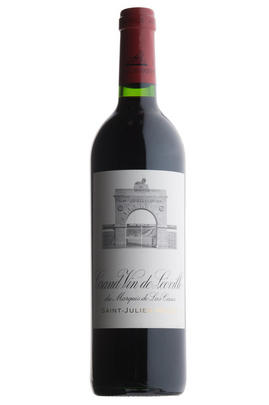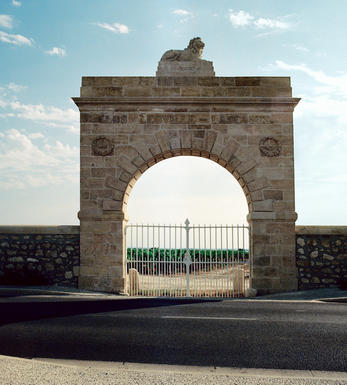
1986 Collection Cepages de Château Léoville Las Cases, Six-Bottle Assortment Case

Critics reviews
The 1986 Leoville-Las Cases is still so youthful in appearance after 30 years, with only a thin bricking on the rim giving away its age. The bouquet is magnificent: extraordinarily pure and delineated, bewitching black fruit laced with cedar and graphite, the latter lending an almost Pauillac-like personality. The palate is exactly as I have found the last dozen or so bottles I have tasted: structured, delineated, intense, aristocratic and imperious. It is less formidable than ten years ago, so it has probably just stepped onto its drinking plateau.
The acidity is perfectly judged, lending freshness and tension, crucial to counterbalance those layers of spicy black fruit that fan out with cedar and graphite (again) towards the finish. You come away with the feeling of having consumed wine with immense energy, yet with so much more to give over the next three decades, and knowing this property, perhaps even the three decades after that! I would agree with the late Michel Delon: the 1986 Léoville Las-Cases is the summit of the 1980s.
Drink 2016 - 2060
Neil Martin, Wine Advocate (December 2016)
The late Michel Delon always thought this was the greatest vintage he had produced. We often tasted it side by side with the 1982, because I always preferred the latter vintage. Of course, the two vintages are pretty different in style, with the 1986 a monument to classicism, with great tannin, extraordinary delineation, and a huge, full-bodied nose of sweet, ripe cassis fruit intermixed with vanilla, melon, fruitcake, and a multitude of spices.
The wine has always been phenomenally concentrated yet wonderfully fresh and vigorous. The wine still seems young, yet it is hard to believe it is not close to full maturity. It is an excellent example of Leoville Las Cases, and another compelling reason to take a serious look at the top Cabernet Sauvignon-based Medocs of 1986.
Drink 2003 - 2035
Robert M. Parker, Jr., Wine Advocate (January 2003)
Harvested from 1 to 17 October. 4% Petit Verdot completes the blend.
Michel Delon, then owner, believed this to be the greatest wine he had ever made. It's not often the case that wines with this much expectation riding on them live up to the hype, but this one did. A stunning wine that, at 33 years old, still feels fresh, concentrated and with a long way left to go. The tannins have the characteristic Las Cases weight and definition, giving form and shape to the sweet berry fruit, but the overall impression is of welcoming juicy pleasure.
Drink 2019 - 2035
Jane Anson, Decanter.com (May 2019)
About this WINE

Chateau Leoville Las Cases
Château Léoville Las Cases is one of the largest and oldest classified growths in the Médoc. It is the largest of the 3 Léoville properties and now without doubt the leading estate in St-Julien.
Léoville Las Cases's 97 hectares of vineyards are superbly sited on gravelly-clay soils with the largest plot being surrounded by a stone wall and stretching between the village of St-Julien and Château Latour. The wine is a Cabernet Sauvignon dominated blend (65%), and is matured in oak barriques (70-80% new) for 18 months.
Léoville Las Cases produces arguably the most exotically perfumed wine in the Médoc and this can be partially attributed to the must being fermented at lower than average temperatures, which leads to its youthful aromatic richness being retained. On the palate it is powerful and concentrated and marvellously well-balanced.
Léoville Las Cases is a 2ème Cru Classé in name but produces 1er Cru Classé quality wines.

St Julien
St Julien is the smallest of the "Big Four" Médoc communes. Although, without any First Growths, St Julien is recognised to be the most consistent of the main communes, with several châteaux turning out impressive wines year after year.
St Julien itself is much more of a village than Pauillac and almost all of the notable properties lie to its south. Its most northerly château is Ch. Léoville Las Cases (whose vineyards actually adjoin those of Latour in Pauillac) but, further south, suitable vineyard land gives way to arable farming and livestock until the Margaux appellation is reached.
The soil is gravelly and finer than that of Pauillac, and without the iron content which gives Pauillac its stature. The homogeneous soils in the vineyards (which extend over a relatively small area of just over 700 hectares) give the commune a unified character.
The wines can be assessed as much by texture as flavour, and there is a sleek, wholesome character to the best. Elegance, harmony and perfect balance and weight, with hints of cassis and cedar, are what epitomise classic St Julien wines. At their very best they combine Margaux’s elegance and refinement with Pauillac’s power and substance.
Ch. Léoville Las Cases produces arguably the most sought-after St Julien, and in any reassessment of the 1855 Classification it would almost certainly warrant being elevated to First Growth status.
Recommended Châteaux: Ch. Léoville Las Cases, Ch.Léoville Barton, Ch Léoville Poyferré, Ch. Ducru-Beaucaillou, Ch Langoa Barton, Ch Gruaud Larose, Ch. Branaire-Ducru, Ch. Beychevelle

Cabernet Sauvignon Blend
Cabernet Sauvignon lends itself particularly well in blends with Merlot. This is actually the archetypal Bordeaux blend, though in different proportions in the sub-regions and sometimes topped up with Cabernet Franc, Malbec, and Petit Verdot.
In the Médoc and Graves the percentage of Cabernet Sauvignon in the blend can range from 95% (Mouton-Rothschild) to as low as 40%. It is particularly suited to the dry, warm, free- draining, gravel-rich soils and is responsible for the redolent cassis characteristics as well as the depth of colour, tannic structure and pronounced acidity of Médoc wines. However 100% Cabernet Sauvignon wines can be slightly hollow-tasting in the middle palate and Merlot with its generous, fleshy fruit flavours acts as a perfect foil by filling in this cavity.
In St-Emilion and Pomerol, the blends are Merlot dominated as Cabernet Sauvignon can struggle to ripen there - when it is included, it adds structure and body to the wine. Sassicaia is the most famous Bordeaux blend in Italy and has spawned many imitations, whereby the blend is now firmly established in the New World and particularly in California and Australia.


Buying options
Add to wishlist
Description
The 1986 Leoville-Las Cases is still so youthful in appearance after 30 years, with only a thin bricking on the rim giving away its age. The bouquet is magnificent: extraordinarily pure and delineated, bewitching black fruit laced with cedar and graphite, the latter lending an almost Pauillac-like personality. The palate is exactly as I have found the last dozen or so bottles I have tasted: structured, delineated, intense, aristocratic and imperious. It is less formidable than ten years ago, so it has probably just stepped onto its drinking plateau.
The acidity is perfectly judged, lending freshness and tension, crucial to counterbalance those layers of spicy black fruit that fan out with cedar and graphite (again) towards the finish. You come away with the feeling of having consumed wine with immense energy, yet with so much more to give over the next three decades, and knowing this property, perhaps even the three decades after that! I would agree with the late Michel Delon: the 1986 Léoville Las-Cases is the summit of the 1980s.
Drink 2016 - 2060
Neil Martin, Wine Advocate (December 2016)
wine at a glance
Delivery and quality guarantee